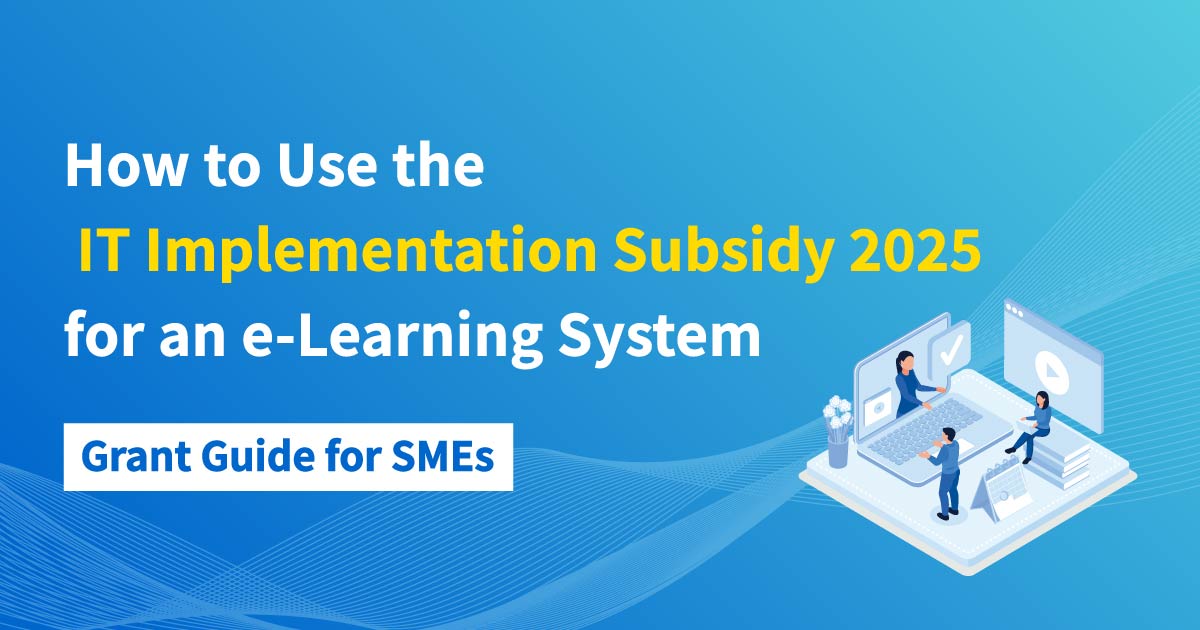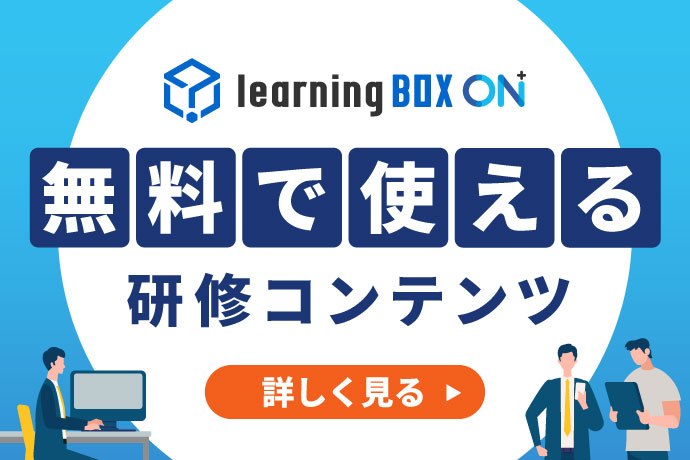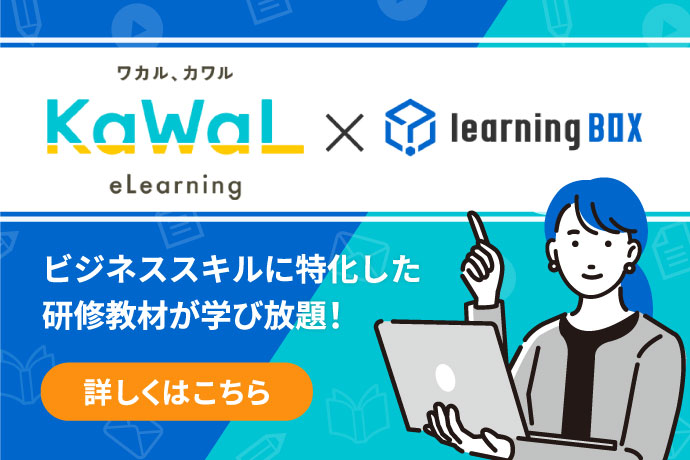On-the-Job Training
Building an Effective Program

On-the-job-training (OJT) is one of the most popular training programs for employee onboarding. This is because the method offers hands-on experience and expected to improve employees’ instant productivity.
Needless to say, beneficial training is a key to success. This article explains the advantages and disadvantages of OJT, effective indication when conducting the program and more.
If you are looking to improve training course building as HR or L&D professionals, here are some tips to follow.
What is OJT training?

OJT seems to be a traditional training method, however, with the passage of time, some unique perspectives have been added to adjust the change of trend.
Definition
OJT refers to On-the-job training. In addition to regular training, it provides mentorship to employees so that they can improve their current capabili. In general, it is often conducted for new or young employees at their workplace.
OJT vs. Off-JT
Unlike OJT, Off-JT is not conducted at the workplace but in another venue. It refers to Off-the-job training, and there are some apparent differences.
First, the purpose of Off-JT does not aim to improve employees’ capabilities for regular work, therefore, mentors do not have to be employees at the workplace.
Secondly, Off-JT is scheduled at a venue, not a workplace. In some cases, HR professionals may arrange the place, build a training program and conduct an all-in-one program by themselves. Some may ask L&D companies for employee onboarding. Information from such companies will raise the bar in that employees can have fresh perspectives and knowledge from outside of their company.
Purpose
The main purpose of the OJT is to have employees learn and acquire core competencies at their workplace.
Through the practical work experiences, it is expected their higher work efficiency and productivity after completing the program.
Trends
Remote on-the-job training
Traditionally, OJT has been conducted face-to-face on site. In recent years, however, it has been gradually switching to online using web cameras and chat tools. Because of the COVID-19 pandemic, remote work and online tools are widely spread and now are getting mainstream in some organizations.
Aligning with the trend, online instructions and work management have been shed the lights on. It can be said that the main features of OJT are the same but the methods have been changing.
OJD
Through work experiences, personal growth is expected in many ways. Unlike OJT, which aims to improve current personal skills, some organizations are more focusing on long-term personal development for their careers.
This method is known as on-the-job-development (OJD), one of the new features of employee onboarding. Personal development is a key to success for each organization to solve the labor shortage, and OJD plays an important role for L&D.
Back to ContentsAdvantages

What onboarding brings your organization? Obviously, there are reasons to conduct employee onboarding. Now, let us focus on each category and find out the keys for OJTs.
Fast Problem Solving
Direct Feedback
When trainees have troubles and concerns, they may ask questions and get direct feedback from employees. This will result in fast problem solving and increase their relevant skill-set effectively.
Personalized Assessment
In general, OJT is conducted with a small number of people. This means trainees have more opportunities to have personalized instructions and assessment from trainers, which cannot be implemented in group training. Also, personalized feedback will raise themselves to higher standards adjusting their skills. Typical group training has difficulties focusing on individual skills and understanding, however, OJT makes it possible to personalize training programs according to each trainee.
Professional Development
Better Understanding
Trainers are accountable for the results of the training. Therefore, logical thinking and better understanding of the content are required. As a trainer, they need to pay more attention to plan what they need to talk about, when they discuss, how they convey the points, etc.
These elements will help for their professional development, which is one of the most beneficial opportunities for trainees in OJT.
Enhance Management Skills
When it comes to personal development, the focus is not only trainees but also trainers. Some companies assign senior employees as mentors to train them to enhance their management skills.
Their accumulated know-hows will result in their professional skills as well as assets of the organization.
Enrich HR Solution
Active Communication
OJT, as its nature, is more likely to have active communication compared to group training. This will contribute to special team bonds through personalized feedback and indications.
Also, it will help new employees and their senior employees or mentors to build trust in relationships at the workplace, which will have a positive impact on their work afterwards.
Cost Cutting
External trainers are professionals, however, compared to the internal trainers, there will be apparent difference of labor costs. Also, it will be an attractive factor that there is no need to make a reservation for the venue for a training program. This means reducing labor costs due to the fewer man-hours as well as the cost-cutting for the venue fee.
When it comes to cost cutting, OJT will help in many ways.
Disadvantages

On-the-job training has both advantages and disadvantages. The following points out some of the disadvantages. When introducing OJT in your organization, these factors will be good to know.
Disadvantages for Trainees
Not Standardized
Proficiency by OJT tends to depend on the trainer’s skills. Different teaching methods may be offered and it will be difficult to provide the same level of training program in terms of equality. Moreover, relationships between trainers and trainees have to do with the outcomes when they finish the program. In some cases, it may result in discrepancies in performance of trainees at work.
Not Covered Necessary Information
The strength of OJT training is that it provides practical learning, but on the other hand, it tends to be difficult to learn systematically in the field. Off-JT training, which is conducted in the form of classroom lectures, e-learning and other educational methods are more effective for systematic learning. There are some cases to combine OJT and other methods to cover necessary information.
Additional Workload for Trainers
When an employee is assigned to be a trainer, it can disrupt their regular duties. Additional workload as a trainer can limit their work and in some cases, it will be difficult to balance both training program and regular duties.
This can lead to lower quality of performance or difficulties to accomplish their duties during working hours.
Overall Supports Needed
As written above, OJT is not standardized and the quality of the training program depends on each trainer. When the trainer focuses less on training, trainees tend to leave behind. This can lead to trainees’ dissatisfaction toward the program.
When it comes to trainers, lack of follow-ups from HR pros will unmotivate them. Important role of HR pros is supporting not only trainees but trainers to make the program successful. Another factor that they should be aware of is to establish rules and criterias for their assessment.
Such elements have much to do with self-confidence at work and corporate trust. When introducing OJT, overall support as an organization is essential.
Back to ContentsKey to Success

How do you make the most of the benefits of OJT? The following explain some keys to success for the effective implementation of the training program.
Efforts as an Organization
How much do you grasp trainers’ daily tasks? It is important to manage training programs with multiple perspectives to support trainers to balance their efforts during the program. As an organization, special consideration will be required for employees in charge not to place an excessive burden on them.
Not only HR pros but other supervisors and senior employees should care about trainers even if they are not in charge of the program. Active communication among such employees plays an important role in that their feedback and advice lead to positive impacts on trainers’ experiences and outcomes. Participation of employees will be one of the key factors for success.
Take Advantage of Elearning
One of the effective methods is blended learning. By combining face-to-face training as OJT and online learning, higher proficiency will be expected. For instance, trainers learn their online courses before or after OJT. This will also reduce the burden on trainers because assigning online content to trainees enhances the level of acquisition of necessary knowledge. This method will contribute to time-saving for training as a result.
Train-the-Trainer
Even though there will be additional workload for trainers, being a trainer has great effects on self-development. Some of them may not be well-experienced and there will be a need to provide workshops or share case studies to improve their teaching skills.
Providing such opportunities will be a bottom-up approach for the entire organization. The more employees acquire such skills, the higher level of L&D will be expected.
This method is effective not only for trainers but for HR pros. Taking advantage of knowledge sharing results in providing well-prepared training programs and will make it a big success from various perspectives.
Back to ContentsSummary
We explored pros and cons of OJT, keys to success and more.
OJT is one of the effective methods to improve instant productivity, and will contribute to cost-cutting for L&D. On the other hand, there may be some challenges to support employees including trainers and trainees. From this point of view, HR pros are required to make considerations to plan the program in an effective way.
Blended learning was also mentioned as one of the keys to success. Making the most of the advantages of online learning will boost the learning efficiency and result in reducing trainers’ workload as well. By implementing blended learning, you will find the solutions for effective onboarding.
If you are interested in blended learning for your training program,learningBOX is recommended to try.
It is one of the popular e-learning systems with versatile functions for in-house training, such as content creation or distribution, and user management. Courses can be designed in line with objectives, and tests can be easily conducted to measure each employee’s proficiency. Many companies have adopted it for on-the-job training because of the usability and reasonable price
learningBOX offers a forever Free Plan. It will be worth trying for effective employee onboarding.
▼You may also like:
Back to Contents


-
Discover rich featuresService Guide
-
Feel free to contact usGet in Touch
-
Try our Free PlanTry Free Plan











